
Winter is waning, Spring has sprung, as the temperature lifts, so should your gaze. You may find a hot mess on top of your solar inverter because even the best can suffer birds nests.
Are Birds Nests Bad For Solar Inverters?
If they’re not inside your garage, solar inverters should be in a nice sheltered position, which is often on the quieter side of the house. They form a nice warm shelf in winter, providing a haven for nesting birds. This can cause the inverters to overheat.
New Residents Moving In
My Fronius Primo Snap inverter, located under the side verandah of the house, at first glance seemed to be uninhabited.
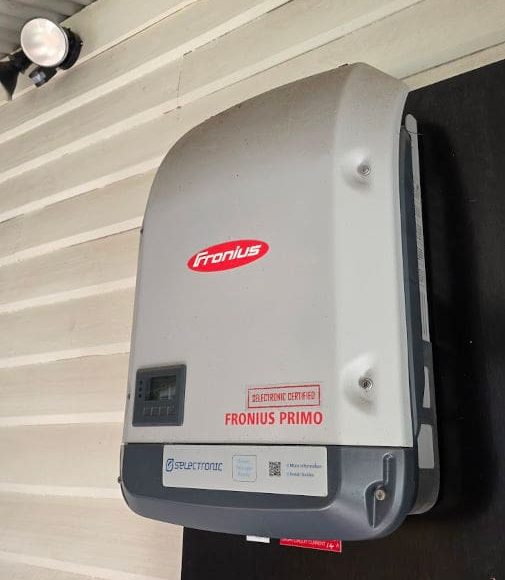
With the top of the inverter 2.4 metres from the ground, all seemed in order.

On closer inspection, we seem to have a problem.
Of course, birds don’t loudly announce the fact they’ve moved in to raise a family, so despite being right outside the laundry, nobody noticed the assembly of sticks & twigs that crowned our solar machinery.
What’s The Problem?

Vivid demonstration of a hard working inverter. Fan cooled Fronius on the left runs cooler while the ABB/Fimer on the right is quietly roasting itself
Solar inverters must be able to dissipate heat. Say you have a unit generating 5kW of electricity at 95% efficiency, that means there’s 250 Watts of waste heat to reject, practically the same as you get from a bathroom heat lamp (which incidentally has it’s own fan cooling).
Whether they’re fan forced or simply rely on convection, parking a blanket of dry leaves and matted garden goodness on top will restrict air flow and raise temperatures.

No amount of fan cooling would blow this mess away, the parallel fins of the heat sink were completely blocked.
Your inverter has internal sensors which mean it won’t go more than 20°C over ambient temperature, so there’s no chance of flame grilled chicks, however excessive heat means the yield will suffer.
To keep things under control, the inverter will simply throttle off and reduce it’s throughput, so no matter how sunny, your bills won’t be helped.
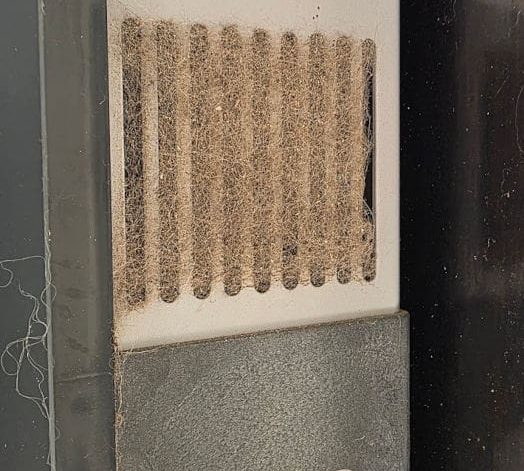
Depending on the model, Fronius snap inverters can have one, two or even 3 fans. These external air intake grilles on both sides should be checked periodically.
Heat Kills
We’re not talking about fried eggs or animal welfare: the old maxim is that heat kills electronics.
Every 10°C increase in operating temperature halves the expected lifespan of electronic components.
It’s a rule of thumb based on the Arrhenius equation, which describes how chemical reaction rates accelerate with temperature, leading to faster degradation and earlier failure in things like capacitors.
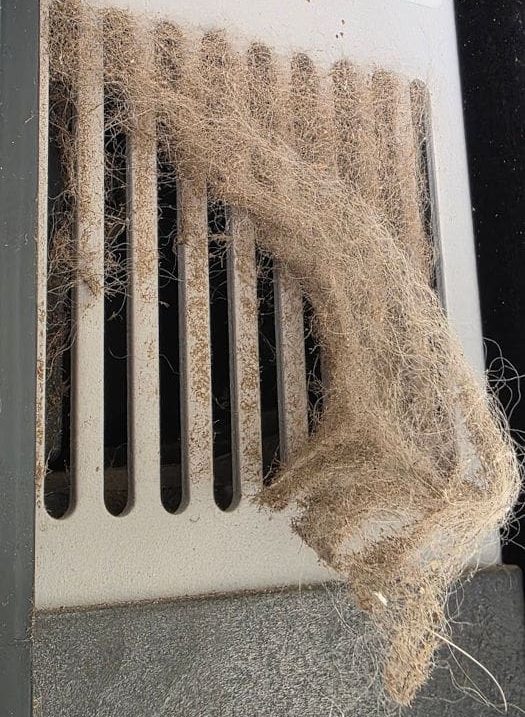
It seems a combination of spider web and proximity to the laundry, with its abundance of textile fibres, makes a distinct matting on these air intake grilles.
Fans Are Cool
Fronius people know, and when they’re being honest, the silent types find there’s forced cooling on the back of bigger Sungrow units too.
By using proper thermal management, you get better yield and longer life with the added bonus of lighter and cheaper equipment. Using a fan is far smarter than bolting a huge slab of aluminium heat sink on and hoping it will sort itself out.
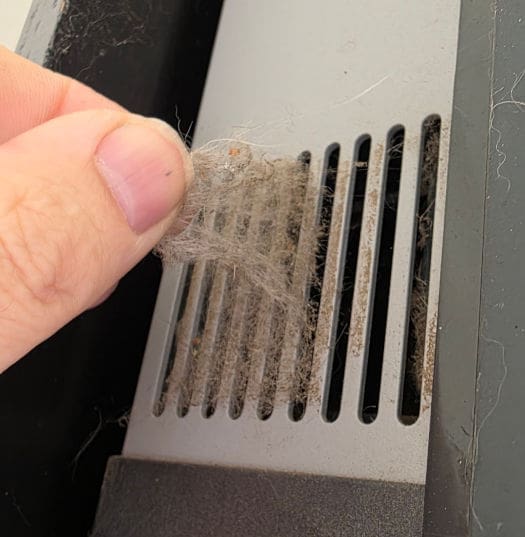
Fronius have a fan test function if you get right into the menus but keeping the grilles clear is the first step
Maintenance Matters
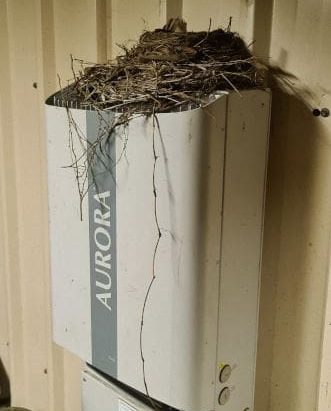
The heat sink on the front here isn’t terribly obstructed but it’s still far from ideal.
Keeping fans clear of geckos, spider webs and the like is important, but the same goes for passive cooled heat sinks. Pointing a garden blower at them occasionally can’t hurt anything.
Really that’s what this whole post is about. It pays to occasionally have a look at your solar and see that nature isn’t trying to reclaim the resources you’ve invested in.
For more on solar maintenance, read up on why inspections of your systems every five years are a smart idea.

 RSS - Posts
RSS - Posts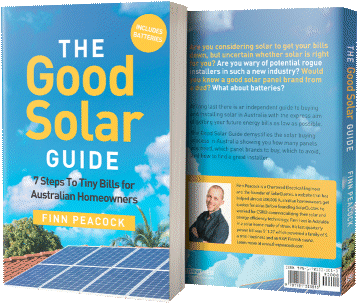



Anthony, 5% of 5,000 watts is 250 watts, not the 500 watts you have included in your article. Agree that 250 watts is still a significant amount of heat to transfer and maintain an optimum environment for the inverter to work in.
Good point Chris,
I was writing about 10kW inverters because that’s what all the cool kids install now, but didn’t complete the edit when thinking 5kW would be more representative of everyone’s 5 with 6.6 system.
Hi Anthony, your article made me think about our Fronius Primo 8.2-1, it is working well and has been for 3 years, but we’re soon to have our dead Powerwall 2 replaced by a Powerwall 3 under warranty (If I can believe anything Tesla tells me 10 weeks into the battery failure).
My question is, should we just use the new battery, or use the built-in inverter as well and delete the Fronius? Is that even possible? The 10kW inverter would handle more of our 10.2kW array than the Fronius and I like the idea of a more integrated system. Thanks, David.
Hi David,
The Fronius is a great unit and your question hinges on a couple things.
The current ratings for Fronius mean there could be arrays wired in parallel and the Tesla won’t handle that without rewiring the panels into single strings.
The DNSP may not allow you to have two inverters connected to the poles & wires. Network permission is normally 10kW/phase for generation and maybe an additional 10kW/phase for batteries.
While the PW2 was a battery only device, PW3 being a hybrid and once you add solar to it, it’ll count toward both allowable totals.
Adding solar to the PW3 would simplify things and ensure reliable blackstart if the battery goes flat overnight.
If you can I would leave the Fronius alone and simply add more solar to the PW3, even if you don’t claim STCs, even if they face south.
1. I like the idea of adding more solar, it would be south facing at 22° (at latitude 29.5°) but our EV would appreciate it. As we have 10.5kW already (single phase connection) and you say “Network permission is normally 10kW/phase for generation”, are we not already at the limit? (Our export limit is 5kW)
2. I think our 27 390w panels are wired as single strings of 13 and 14, but will try and check that with the installer. Would that mean we could use the P3 hybrid inverter and remove the Fronius, if we don’t add more pv?
3. Could you clarify “maybe an additional 10kW/phase for batteries.” Does that mean the PW 3 hybrid battery would allow an additional 10kW of solar on the single phase?
FINALLY I feel OK owning micro-inverters 😉
Bahahahaha,
I take your point Nick but I’ll just leave this here 😉
Ha, kick a guy when he’s down 😉
Are there companies now that do a one-stop clean-and-check type service, for panels? Given the millions who now own them, it seems an opportunity.
(Mine look fine for now, 3 years in.)
OK – we up in the Wet Tropics (still using good old reliable Trace 3024 inverters) – but as anything outside will rapidly be occupied by gekkos (masses of eggs on circuit boards), cockroaches and other mess makers. To say nothing of 90+% humidity (condensing). So we have all our solar electronics in a smallish room – where we also store clothes and stuff that would otherwise be destroyed by critters and humidity. Our “warm room” (warmed by the waste heat from the gear).
It has been our total saviour – over the 25 years of its existence. Plus the electronics is very happy in a stable environment.
Sounds like a good solution Hugh,
We often install equipment in a shipping container with a refrigerative air conditioner to keep things under control. When you have a bank of batteries, kept in a tin, half way across the Nullabor plain… keeping them cool is important.
We’ve had this problem twice now, I loosly, but firm enough so the black birds can’t drag it out, fitted bird netting, the large net style, over the back of our inverter, carefully ensuring it hasn’t blocked the airflow. Tried a plastic owl and that worked for a couple of years.
Thanks Anthony, good point to watch out for birds nests…. And here’s another one… are you familiar with mud wasps? They catch spiders, paralise them and lay eggs in them then they build mud “nests” with rows and rows of these undead spiders in them. And they LOVE to build their nests in small homes and grooves between timber boards or bits of metal. So we just had a Sigenergy battery installed on the outside of our carport. My plan was to just put a roof over it but, looking at it, it’s got a thousand grooves and holes that would make perfect mud wasp nests so I’m going to have to build a wasp-proof cage around the whole thing or they will kill that battery in no time. They would fill up every groove in the heat sink with mud and pretty soon it wouldn’t be able to dissipate excess heat at all. Have you heard of anyone else having issues with them before?
Hi Andy,
I’m familiar with wasps nests and some of the off grid equipment I’ve found also suffers from ants invading the inner workings.
As for SigEnergy, I think they have pretty good IP ratings but perhaps what you need is some steel tube, like a gate frame. Clad the outside to keep the sun off and fill both the sides with flywire.
I’ve seen a bloke who built “cages” instead of bollards to protect batteries but they aren’t commercially available (yet?)
Main thing is that you need free flowing ventilation.
I am so glad my installer put our Fronius IG30 in our attached insulated room.
Still going 17 years later even if it is less efficient than newer inverters.
And no birds to worry about.
Anthony,
It sounds like you’ve been providing a temperature controlled incubator. No wonder the birds moved in.
I’m now even more glad mine are indoors, in the workshop. With the batteries there too, it’s warm even in winter.